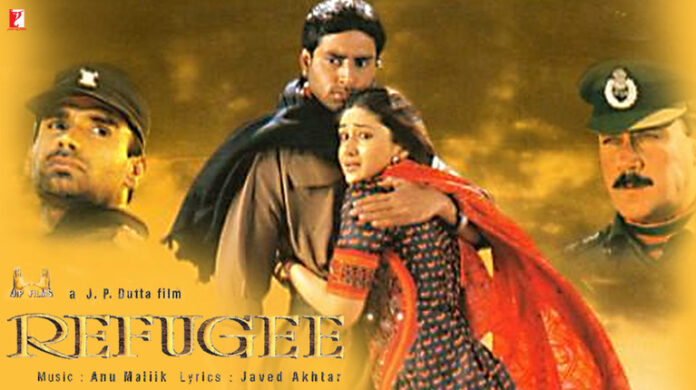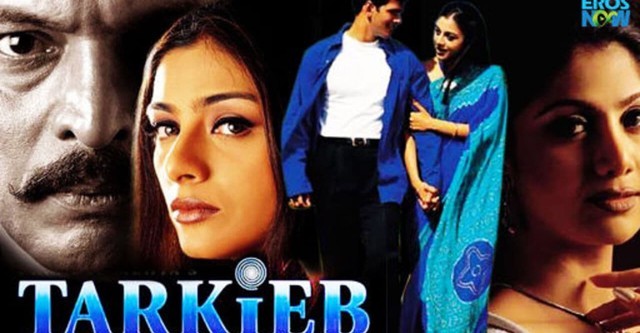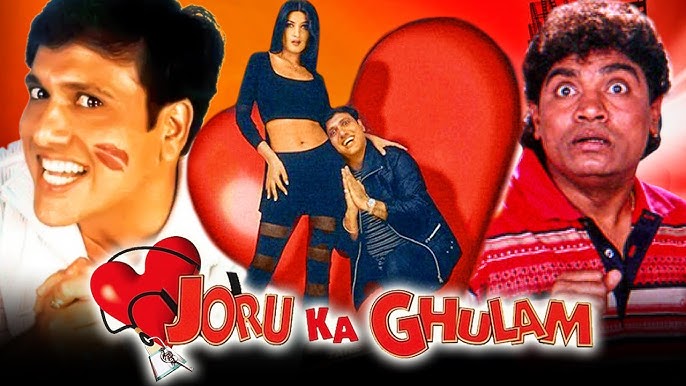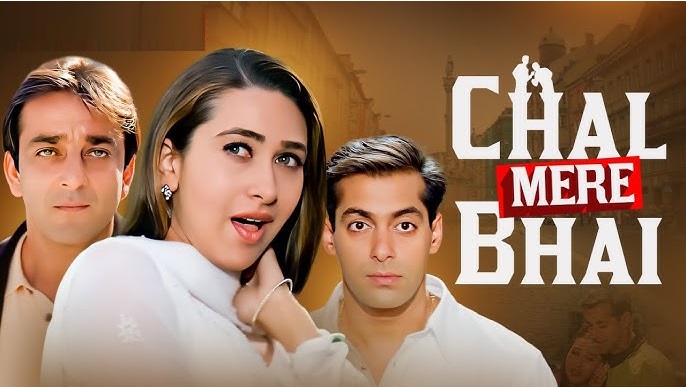REFUGEE
J.P. Films’ Refugee (UA) is a love story that crosses not just barriers but borders. A boy and a girl, living on either side of the Indo-Pakistan border, fall in love with each other but find themselves helpless as none of them is permitted by the law of his/her land to cross the border. The boy is a refugee who helps people, wishing to illegally cross the border, in their endeavour, for a fee charged by his guardian. He meets the girl during one such exercise. He is reformed by an Indian police officer and joins the police force to catch the culprits and terrorists. In the end, he also gets his love back. The story idea is novel but a loose screenplay does not let the idea blossom totally. Yet, the dialogues (O.P. Dutta) are gems and strike a chord in the viewers’ hearts.
The story-screenplay-dialogues apart, what makes the film likeable to a fair extent is the new romantic lead — Abhishek Bachchan and Kareena Kapoor. They lend an unmistakable touch of freshness to the subject and even though the film gets very boring at some places, the two newcomers keep the audience interest alive.
The film deals with Hindu-Muslim enmity and tries to show that except for politicians and people with ulterior motives, nobody is interested in war or rivalry between India and Pakistan. But this part of the sentiments (of a lurking desire to be friends) does not really touch the heart. In a way, all talk of patriotism and Indo-Pak amity is lost on the viewer as it looks contrived at many places. However, the biggest drawback remains the pace of the film and its loose editing. Director J.P. Dutta will have to edit the film afresh and chop off at least 20 minutes of the total running time (an impractical 3 hours, 17 minutes). In the alternative, distributors and exhibitors of the film will become self-styled editors and do the needful, either rightly or wrongly. In particular, the meeting scene between Jackie Shroff and Sunil Shetty, the action scene of Sunil Shetty amidst camels, the hospital scene can all be heavily trimmed. Climax and pre-climax are effective after a loose preceding portion.
Abhishek Bachchan makes an absolutely extraordinary debut in a role that’s not just difficult but also not very safe for a newcomer. Despite not having been exploited to the fullest, he mesmerises the audience with his electrifying screen presence, superb physique with an innocent face, excellent style of walking and running, expressive eyes, lovely dialogue delivery and voice, brilliant acting and superb action. The boy is true star material and will be loved by the public. Kareena Kapoor has a very pretty face and unbelievably expressive eyes which she uses very, very intelligently in her maiden film. She lacks sex appeal in the film but her performance is first-rate. Whether it is light scenes or dramatic ones, she does a marvellous job with the rarest of confidence for a first-timer. Jackie Shroff is effective and natural to the core. Sunil Shetty underplays beautifully and gives a very good account of himself. His sacrifice in the climax is heartwarming. The dance of Jackie and Sunil in the climax song is exhilarating. Anupam Kher gets into the skin of the character and acts ably. But his characterisation is weak. Kulbhushan Kharbanda is the best among the character artistes. He delivers a performance that’s just too brilliant. Reena Roy is alright. Sudesh Berry does quite well. Shadab Khan leaves a mark as Anupam’s wayward son. Avtar Gill is good. Ashish Vidyarthi does a fine job. Mukesh Tiwari stands his own. Arif Zakaria is good. Padmini Kapila, Vishwajeet Pradhan, Rajeev Goswami and the rest lend very good support.
J.P. Dutta’s direction is good but his screenplay is loose. Yet, he gives a fare different from the routine and scores there. Anu Malik’s music is melodious but all the songs are slow because the mood of the film demanded that. ‘Panchhi’, ‘Taal’ and the climax songs are very tuneful. Basheer Ali’s camerawork is a job very neatly done. Action (Bhiku Verma) should have been better. Background music is good.
On the whole, Refugee has taken a historic start and that’s 75% of the battle won. Despite not having sustaining power and no novel highlight scenes, the film will prove an earner on the strength of initial business, notwithstanding mixed reports. Muslims and ladies’ patronage will be a bonus. The film deserves tax-exemption and that, needless to add, will give longevity to the film. But the most urgent requirement is heavy re-editing if the first week collections are to be kept in tandem with the bumper opening.
Released on 30-6-2000 at Liberty and 23 other cinemas of Bombay thru Devgan Entertainment & Software Ltd. Publicity: extraordinary. Opening: simply like that of an Amitabh blockbuster of the eighties — or maybe, even better! …….Also released all over. Opening was EXTRAORDINARY everywhere, from North to South and East to West.
LATEST POSITION
The fabulous opening of REFUGEE is the talk of the trade.
Tarkieb is alright in Bombay and parts of U.P. mainly. 1st week Bombay 28,11,053 (68.35%) from 7 cinemas (11 on F.H.); Ahmedabad 16,81,958 from 7 cinemas, Jamnagar (matinee) 25,915 (1 in regular unrecd.); Pune 12,70,145 from 5 cinemas (1 in matinee), Solapur 2,90,127 from 2 cinemas (1 in matinee); Delhi 34,12,585 (51.19%) from 11 cinemas; Lucknow 5,47,336, Agra 1,90,000, Varanasi 67,917 (1 unrecd.); Calcutta 10,77,595 from 6 cinemas; Nagpur 4,77,898 from 4 cinemas, Amravati 2,70,500, Akola 2,00,681, Raipur 1,20,520, Bhilai (gross) 2,00,670, Jalgaon 1,94,667; Indore 1,40,000 (2 on F.H.); Jaipur 3,15,694 (34.58%) from 2 cinemas; Hyderabad (gross) 22,43,438 from 8 cinemas.
…………
Joru Ka Ghulam drops. 2nd week Bombay 21,02,271 (60.09%) from 6 cinemas (11 on F.H.); Ahmedabad 4,90,000 from 3 cinemas, Jamnagar 40,454 (1 in matinee unrecd.); Pune 4,87,373 from 4 cinemas (1 in matinee), Solapur 1,88,433; Delhi 14,61,925 from 9 cinemas (2 on F.H.); Lucknow 1,86,001 (1st 2,85,203), Agra 2,64,356, Varanasi 1,32,394; Calcutta 2,13,529; Nagpur 1,21,070, Amravati 1,34,868 (1st 2,06,475), Raipur 1,04,169, Chandrapur 86,004 (1st 1,51,543), Yavatmal 1,03,654, Bilaspur 67,103 (1st 1,25,113), Sagar (5 days) 31,152; Indore 1,40,487 (1 on F.H.); Jaipur 2,26,920 from 2 cinemas; Hyderabad (gross) 3,91,599 from 2 cinemas (1 in noon).
Josh 3rd week Bombay 38,88,162 (73%) from 11 cinemas (8 on F.H.); Ahmedabad 1,44,681, Jamnagar 45,972, total 3,36,895; Pune 6,69,231 from 3 cinemas (1 in matinee), Solapur 1,16,705 from 2 cinemas (1 in matinee); Delhi 22,48,554 from 7 cinemas (1 on F.H.); Lucknow 3,80,948 (2nd 4,56,801), Agra (21 shows) 58,400, Varanasi 1,12,238, Hardwar 25,000, total 2,88,036, Muzaffarnagar 50,317, total 2,35,616; Calcutta 6,53,979 from 4 cinemas; Hajipur (14 shows) 29,160; Nagpur 4,94,101 from 4 cinemas, Amravati 1,69,197 (2nd 2,32,791), Akola 3 weeks’ total 4,85,476, Raipur (gross) 2,44,097, total 9,95,972, Durg 48,627, Jalgaon 94,427 (2nd 1,71,529), Yavatmal (3 days) 11,562, Bilaspur 75,296; Jaipur 3,06,835, Ajmer (28 shows, gross) 1,26,444, Bikaner 82,328; Hyderabad (gross) 9,18,110 from 4 cinemas (1 in noon).
Kaho Naa…Pyaar Hai 24th week Bombay 3,88,936 (43.63%) from 2 cinemas (4 on F.H.); Ahmedabad 2,27,263 from 4 cinemas (1 unrecd.); Pune 2,75,437 from 4 cinemas (1 in matinee), Solapur 64,929 (23rd 75,636), Barsi 7 weeks’ total 4,21,679; 24th Delhi 1,31,582; Lucknow 1,15,785 (23rd 1,20,982), Agra 55,390, Varanasi 66,921; Nagpur 85,258 from 2 cinemas, Amravati 47,605, Akola 50,621, total 26,22,349, Raipur 44,789, 23rd week Chandrapur 62,571, total 27,36,228; 24th week Jaipur 94,598; Hyderabad (gross) 2,50,413 from 2 cinemas (1 in noon, 1 on F.H.).
IMPDA TO HOLD ELECTIONS EVERY 2 YEARS
At an extraordinary general meeting of the Indian Motion Picture Distributors’ Association (IMPDA), held on 29th June at the association’s office in Bombay, it was resolved to hold elections to its executive committee every two years instead of annually, as at present. Therefore, an elected committee will henceforth hold office for two years. However, the annual general meeting will be held every year. The resolution will become effective after the IMPDA annual general meet and elections in September this year.
‘DULHAN HUM LE JAYENGE’ 100 DAYS
Producer Gordhan Tanwani’s Dulhan Hum Le Jayenge completes 100 days of its run today (July 1) at Novelty (matinee), Bombay and other stations. The film, directed by David Dhawan, stars Salman Khan, Karisma Kapoor, Om Puri, Paresh Rawal, Anupam Kher, Farida Jalal, Himani Shivpuri, Johny Lever and Rakesh Bedi. Music: Himesh Reshammiya.
DOLBY DIGITAL EX SOUND AT JAYA, BOMBAY
Jaya cinema (Borivli), Bombay, has been equipped with Dolby Digital EX sound system (8-track). It has become operational with Refugee, released this week. This sound system has also become operational from 30th June at Gaiety, Bandra, Bombay, with Refugee. Galaxy, Bandra, has the same sound system which will become operational from 7th July with Bichhoo.
COURT DISALLOWS STAY ON RELEASE OF ‘EAST IS EAST’
Star Entertainment Ltd., the Indian distributors of East Is East (English), got a court ruling on 29th June against plaintiffs Mahal Pictures Ltd., Bombay, which had sought to prevent the release of the film in India.
Mahal Pictures Ltd. had alleged that the inclusion of two songs from its film, Pakeezah, in East Is East was distasteful and made a mockery of the film, besides amounting to an illegal use of its property. HMV produced evidence that it (HMV) was the legal owner of the music of Pakeezah, and not Mahal Pictures.
Jiten Hemdev, managing director of Star Entertainment, submitted that the right for the usage of the two songs of Pakeezah had been duly licensed by HMV to the producers of East Is East for a valuable consideration. The court ruled that Mahal Pictures had no locus standi as the copyright of the songs belonged to HMV.
East Is East (English) and its Hindi dubbed version, East Phir Bhi Hai East, will therefore be released on 7th July, as scheduled, in Bombay and other cities. The Hindi version has been released this week in Calcutta. The English version was released yesterday (30th June) in Delhi, Calcutta and Bangalore.
NEW AC PLANT FOR REGAL, BOMBAY
Regal cinema, Bombay, which screens English films, is closed since 9th June. The cinema is replacing its 50-year-old air-conditioning plant with an ultra-modern one imported from Malaysia. The cinema will reopen on July 14/21.
ABCL SUED FOR BREACH OF TRUST
The Greater Kailash police of New Delhi recently lodged cases of criminal misappropriation against ABCL chairman Amitabh Bachchan and vice chairperson Jaya Bachchan on the basis of the order passed by metropolitan magistrate Manoj Jain.
The police registered three cases against ABCL for alleged criminal breach of trust in its dealings with New Delhi Television Ltd. (NDTV) by non-payment of dues of over Rs. 10 crore.
The metropolitan magistrate, after hearing NDTV’s complaint, had ordered the police to register the cases and complete the investigation before August 3, the next date of hearing.
According to the First Information Report (FIR), ABCL had worked as an agent for NDTV for its ‘Budget ’96’ programme telecast by Doordarshan on July 22, 1996. After deducting its 20% commission and paying the telecast fees to Doordarshan, ABCL was supposed to pay NDTV Rs. 85.94 lakh, which it did not.
The second FIR said that ABCL, as an agent for NDTV’s ‘Tonight’ programme, was to pay Rs. 3.55 lakh per episode to the television channel between May 13 and October 18, 1996, but did not pay its share amounting to Rs. 4.10 crore, as per the agreement.
According to the third FIR, ABCL had allegedly misappropriated Rs. 5.50 crore which should have been paid to NDTV for the ‘Good Morning India’ programme.
‘KAHO NAA…PYAAR HAI’ SILVER JUBILEE
Producer-director Rakesh Roshan’s Kaho Naa…Pyaar Hai entered its silver jubilee week run in 80 cinema halls all over India on June 30. Starring Hrithik Roshan and Amisha Patel, the film has music by Rajesh Roshan and cinematography by Kabir Laal. Writer: Honey Irani.
SUDHAKAR BOKADE ATTEMPTS SUICIDE
Producer Sudhakar Bokade consumed an overdose of sleeping pills on 27th June, in an attempt to commit suicide, according to a report published in a Marathi daily of Bombay. The producer was rushed to Lilavati Hospital, Bandra, Bombay. This was reportedly Bokade’s third attempt at committing suicide by swallowing sleeping pills. Acute mental depression seems to have driven the producer to take this drastic step.
It has also been reported that Sudhakar Bokade’s wife has filed a petition for divorce from him.
It is also well-known that Bokade has been in a state of depression ever since the progress of Kalingaa was brought to a halt following his dispute with Dilip Kumar who was directing the film.
IMAX COMES TO INDIA
The Indian screen will assume an unprecedented dimension with the opening of IMAX Adlabs Theatre in November/December this year in Bombay. Setting up the state-of-the-art cinema in Bombay is the brainchild of Adlabs chief Manmohan Shetty. The IMAX Adlabs Theatre, an IMAX Dome theatre, coming up at Wadala, Bombay, will be part of a four-cinema multiplex. The IMAX Dome, which is 30 metres (100 feet) in diameter, will be the largest IMAX dome in the world and the first of its kind in the Indian subcontinent. The Dome theatre will have 520 seats, with 6 seats reserved for the disabled. The admission rates will be Rs. 150 for adults, and Rs. 75 for children under 12.
At a press conference held at the Rooftop Oberoi, Bombay, on June 29, Manmohan Shetty said, “Since 1972, I have been thinking of IMAX cinema in India but could not give shape to my thoughts due to various difficulties. The Nehru Planetarium was also trying to set up an IMAX cinema but it couldn’t succeed. Every time I went to an IMAX theatre abroad, I invariably thought that India should also have an IMAX theatre.”
10 SHOWS A DAY
The theatre, housed in an area of 942.83 square metres, will screen 10 shows a day with each film running for approximately 40 to 50 minutes. According to Shetty, “The IMAX cinema is expected to benefit the students’ community as it will provide education and entertainment.”
Besides the IMAX Dome theatre, the other 3 screens will show regular (35mm/70mm) films. “The cinema will have a lot of parking space and it is located mid-town, which would make it accessible from any part of Bombay. Arrangements will be made for online booking of tickets and we are also negotiating with the Maharashtra Tourism Development Corporation (MTDC) to promote the theatre as a tourist attraction.”
Of a height equivalent to almost that of an 8-storey building, the IMAX screen (on which 15/70mm frame is projected) is ten times larger than the conventional 35mm screen and five times bigger than the 70mm screen. The IMAX screen, made up of a special diffused matte white vinyl perforated with thousands of tiny holes, is specially made for “accoustical transparency”. The IMAX 6-channel, high-fidelity motion picture sound system, with sub-bass, eliminates variation in volume and sound quality over the theatre’s seating area. The IMAX projectors are said to be the most advanced, the highest precision and the most powerful projectors. The projection is done through Rolling Loop film movement. The Rolling Loop advances the film horizontally in a smooth wave-like motion thus providing outstanding image clarity.
IMAX: A BRIEF HISTORY & INFORMATION
♦ The IMAX system has its roots in EXPO ’67 in Montreal, Canada, where multi-screen films were the hit of the fair. A small group of Canadian filmmakers/entrepreneurs (Graeme Ferguson, Roman Kroitor and Robert Kerr) decided to design a new system using a single powerful projector rather than the cumbersome multiple projectors used at that time. The result was the IMAX projection system.
♦ The IMAX technology was premiered at Fuji Pavilion EXPO ’70 in Osaka (Japan). The first permanent IMAX projection system was installed at Ontario Place’s Cinesphere in Toronto in 1971. IMAX Dome (OMNIMAX) debuted at Reuben H. Fleet Space Theatre in San Diego in 1973.
♦ In 1997, Imax Corporation won an Oscar, the Academy of Motion Picture Arts and Sciences’ highest honour, for scientific and technical achievement in films.
♦ There are more than 150 films in the IMAX medium film library.
♦ There are currently 210 permanent IMAX theatres in 26 countries. Of these, 80 theatres are equipped with IMAX 3-D technology. The 3-D films can be screened only on flat IMAX screen and not on IMAX Dome.
♦ IMAX Corporation, founded in 1967 and headquartered in Mississauga, Canada, is the pioneer and leader of giant-screen large format film and motion simulator entertainment.
♦ IMAX has forged alliances with prominent corporations of the world including The Walt Disney Company, whose Fantasia 2000 had created new records in the USA, Famous Players Inc., America Online and Loews Cineplex Corporation.
ADLABS ADDS ON
Founded by Manmohan Shetty and Vasant Mamania in 1978, Adlabs Films Ltd. initially catered to only the ad films market. Processing documentaries and short films then became a part of Adlabs’ growing business. Adlabs was the first film processing laboratory to introduce the blow-up printing facility — from 16mm to 35mm. The lab’s expansions plans saw the company re-equip itself with state-of-the-art film processing. The company, from processing 16mm, 35mm, 70mm and Cinemascope films, has now pioneered the giant-screen projection in India, the IMAX!
When asked whether he was planning anything bigger than IMAX, Manmohan Shetty quipped, “If anything bigger than this comes along, we will not lose an opportunity to go for it!” When asked about whether he would be granted tax-holiday by the Maharashtra government for his pioneering effort in the country, the Adlabs MD informed, “I don’t know the state government’s stand. I will ask Mr. Kiran Shantaram to help me out.”
FUTURE PLANS
The project has entailed an overall investment of Rs. 52 crore. When asked when he will break even, Shetty disclosed, “That will take about 5 years.” To another question about who had financed the project, he informed, “Adlabs and their banks… If IMAX works here, I swill be setting up one more, in Bangalore. Someone else is planning an IMAX theatre in Hyderabad. But I will not do anything of this sort in Delhi. I don’t like Delhi!”, he chuckled.
The IMAX Adlabs Theatre has been designed by well-known architect Raja Aederi, who has built the grand ICICI building at the Bandra-Kurla complex.
Peggy May of IMAX Corporation said, “IMAX has come about to educate and entertain future generations.”
Mukta Arts To Go Public
Monday, July 10 will be a red-letter day for one of the biggest filmmakers of Bombay. This is one Monday which will be as crucial as a Friday of an eagerly-awaited release. For, on that day will open the public issue of Subhash Ghai’s Mukta Arts Limited. The customary question — “How is the opening?” — which the film trade asks on a Friday when a new film hits the screens, will be the premium question on July, the 10th. It’s a different issue that all big films, like those made by Subhash Ghai and his Mukta Arts banner, have always become ‘public issues’, discussed with great excitement before and after the release!
The public issue of Subhash Ghai’s Mukta Arts Limited is all set to open on July 10. The IPO is for 50,00,000 equity shares of the face value of Rs. 5 each, at a premium. The issue price is expected to be between Rs. 150 and Rs. 200. Mukta Arts, the banner behind such money-spinners as Hero, Karma, Saudagar, Khal-Nayak, Pardes and Taal, is looking to finance future plans by going in for a public issue.
The banner has, in the last few years, diversified into allied businesses and is proving equally lucky in the new enterprises. Its studio — Audeus — providing production and post-production facilities, is doing brisk business, so much so that plans are afoot to expand the business. Towards this end, Mukta has finalised the deal for acquisition of the first floor of the building which houses Audeus. Just in March 2000, Mukta Arts alongwith Manmohan Shetty of Adlabs put a telecine unit at Film City in Bombay. Besides giving quality service to producers, the telecine unit is giving Mukta Arts quality returns on its huge investment.
So what are the expansion plans of Mukta Arts?
1) Film Training Institute: One of the objectives of the present resource raising exercise through the IPO is to fund a Film Training Institute. Mukta has plans to establish a training institute which will groom new talents in the film industry in various related areas like acting, direction, photography, cinematography, sound technology, etc. Commercial operations are expected to begin in October 2002.
2) Movie Production with other directors: Mukta has plans to hire other directors (apart from promoter Subhash Ghai) for making films (and adding to its software library). It proposes to produce three categories of films with budgets of Rs. 1 crore, Rs. 5 crore and Rs. 10 crore.
3) Production of teleserials and music albums: Mukta has chalked out plans to produce TV serials as well as music albums which, again, will be a part of its software library for the future.
4) Expansion and upgradation of its hardware facilities: The Company’s existing post-production studio — Audeus — is proposed to be upgraded to include music recording facilities, mixing facilities and graphic editing suites. This will not only consolidate the Company’s existing hardware back-up for its in-house production ventures, but will also contribute significantly to a steady flow of revenue through the hiring of facilities to other producers and processors. Commercial operations will begin in the expanded project from October 2000.
5) Film Distribution: Mukta has plans to set up distribution centres overseas (in the USA, the UK and the Middle East) in order to exercise direct control on the distribution of films belonging to its software library and expand the revenue stream from this activity. The Company also has plans to strengthen its domestic marketing network by setting up distribution centres across the country.
6) Webcasting: Mukta has plans to exploit the internet as a content-providing medium to expand its reach.
7) Software Library: The growing software library of Mukta (which the Company intends to enhance and enrich through acquisition of popular entertainment content) will remain a steady revenue earner in future.
The IPO of Mukta Arts may well change the face of film business in India. In that sense, it is the beginning of an entirely new chapter in showbiz. Like Mukta Arts was the first film production company to have its film (Taal) insured, its public offering is also the first of its kind in Bombay filmworld. As Subhash Ghai, the man behind Mukta Arts, says, “I would like people to share in my company’s success.” As in the case of insurance, where other producers have started insuring their films, likewise, the IPO of Mukta Arts may well trigger off a trail of public issues in the industry.
Especially, the IPO of Mukta Arts is an important event for the industry because it would seek to legitimise the transactions in the industry which, of late, have come under a cloud for various reasons. “Besides promoting new talent, Mukta Arts will bring back the glory of the film industry,” informed an ecstatic Ghai. “What’s more, Mukta Arts will also encourage talented producers and directors who have ideas and who are men of integrity. For such people, money will never be a constraint,” added Subhash Ghai. The public issue of Mukta may, in the days to come, prompt good production companies, who are down and out, to once again stand on their feet. As Ghai said,”I am striving to give something to the industry which has given me so much.” It would not be out of place to mention here that Ghai is a first-generation producer-director, who started out on his own in this ultra-competitive industry and has, in a span of 25 years, built a veritable empire called Mukta Arts. It may be this humble beginning of his that has prompted his company to introduce non-star sons and daughters to the world of films. Jackie Shroff, Madhuri Dixit, Manisha Koirala and Mahima Chaudhry have all had no film background, but Mukta spotted their talent, groomed them and made them into saleable stars.
The film industry, as a whole, has been booming in the last decade. Film business has multiplied manifold. Export earnings of the Bombay film industry, which used to be in double-figure crores, went up to Rs. 665 crore in 1999 and are expected to be Rs. 14,700 crore in five years. The total revenue generation of the film industry is also expected to take a five-fold jump — from Rs. 6,215 crore in 1999 to Rs. 33,984 crore in 2005. Specifically, Mukta Arts’ Taal alone generated Rs. 22.99 crore revenue for the company!
Mukta Arts’ public offering will consist of book-building portion and fixed price portion. The book-building portion will open on July 10 and close on July 15.
It does not need to be reiterated that the music of Ghai’s films have always cast a magical spell on the listener. Will his IPO cast a magical spell on the investor? The filmmaker must have definitely worked hard to ensure that the public investment makes enchanting music for him now, and for the investors in the years to come — in the shape of rich and rewarding dividends. Not a Taal — sorry, tall claim, this!
YOU ASKED IT
How will Hamara Dil Aapke Paas Hai be released on 11th August when its music has not yet been released?
– Why only music, the promotional trailers of the film also have not begun to be shown on satellite channels. But producer Boney Kapoor is hell-bent on getting the film on August 11.
Like Refugee and Bichhoo were to be released on the same day, two forthcoming big films — Tera Jadoo Chal Gayaa and Dhadkan — are also scheduled to come in opposition of each other on 18th August. So also, Hamara Dil Aapke Paas Hai and Deewane on 11th August. Will history repeat and will there be postponements?
– History may not repeat so fast, but still, you never know!
Various state chief ministers go abroad to seek investments from NRIs. Why don’t our producers, wanting to make mega-budget films, seek NRI funds? Will the NRIs be willing to invest in films in India?
– NRIs and even foreigners are willing to invest in films in India but they are put off by the lack of discipline, organisation and transparency.
DO YOU KNOW?
* REFUGEE has created a city record by collecting 27,682/- on the first day (5 shows) at Dilip, Ballarpur.
* Sandesh has the distinction of being the first cinema in Nasik district to have installed Dolby Digital Sound. REFUGEE opened at the cinema this week.
* REFUGEE opened to 100% houses on its first day at Vinay, Adipur. The cinema has started online ticket booking (www.kandlaonline.com), making it the first cinema in Saurashtra-Kutch to do so.
* REFUGEE has created a city record by collecting 2,64,281/- on the first day from 5 cinemas of Nagpur. Two cinemas drew all 4 shows full, while in each of the 3 other cinemas, 3 shows were full.
* REFUGEE has created a theatre record by collecting 40,982/- on the opening day at Vasant, Akola. All 5 shows were full. Heavy crowds were witnessed at the cinema and hundreds of people, without tickets, had to return home in every show!
* REFUGEE took a bumper opening at Raj, Raipur, by drawing all shows full in advance on the 1st day. It collected 94,560/- (gross).
* REFUGEE has created a city record by collecting 60,506/- on the opening day (5 shows) at Jayant, Chandrapur.
* REFUGEE drew all 6 shows full in advance at Shree Venkateshwara, Bhilai, and collected 77,306/- (gross) on the opening day, thereby creating a city record.
* REFUGEE has created a city record by collecting a total of 85,477/- on the opening day at Bilaspur (2 cinemas): Jeet (6 shows) 65,422/-, city record; Balram (4 shows) 20,055/-.
* REFUGEE has created a city record on the first day at Mohan, Khamgaon (C.P. Berar).
HALF-YEARLY CLASSIFICATION: 2000
(Total Releases: 87 Films, including 30 dubbed films)
The two releases of this week — REFUGEE and EAST PHIR BHI HAI EAST (dubbed) — have not been classified, though they have been considered in arriving at the total number of releases.
AAA (Super-Duper Hit)
KAHO NAA…PYAAR HAI
(lesser in a couple of circuits)
AA (Super-Hit)
–
A1 (Hit)
–
A (Semi–Hit)
–
BB (Overflow)
Kya Kehna!
(‘A1‘ in Bombay)
Commission To Overflow
Badal
(‘A‘ in Punjab; average in some circuits)
B1 (Commission Earner)
–
Coverage To Commission
Josh
(overflow in Bombay, Nizam & Mysore; losing in some circuits)
The World Is Not Enough (dubbed)
Coverage
Mela (commission-earner in some circuits; losing in some)
Pukar (tax-free in several states) (losing in some circuits; overflow in Bombay)
Dulhan Hum Le Jayenge (losing in some circuits; commission earner in a couple of circuits)
Khiladi Khatron Ka (dubbed)
The Rest
…………
3-E
Education-Entertainment-Enlightenment
A Sellout, Gee!
The trade had scoffed at J.P. Dutta when he announced Refugee. “Oh, what a bad title”, “Who will understand the English title?”, and “It’s so difficult to pronounce” were the kind of comments that did the industry rounds. But J.P. did not budge. Today, this very “bad title”, “English title” and “difficult to pronounce” title has broken records as far as the advance booking is concerned. The crowds for the advance booking outside Bombay cinemas, where the film opened on Friday, were to be seen to be believed on Monday (June 26) morning. Even in centres like Nagpur and Amravati, where there exists no system of advance booking, the distributor of Refugee experimented with an advance booking for the film and boy! the booking was indeed brilliant.
All the 28 shows of the first week at Smruti cinema of Nagpur were booked en bloc in advance by clubs and societies! At Palanpur in Gujarat, two screens in the same premises are showing Refugee in its first week — a record. City Pulse cineplex in Gandhinagar opened plans on Sunday (June 25) and the booking was outstanding!
Trimmed
J.P. Dutta is known to make lengthy films. As always, Refugee has also turned out to be lengthy. The censored film had a running time of 3 hours and 29 minutes. Now, distributors are known to detest anything that has a running time of over 3 hours because it means starting the first show of the day before 11 a.m. Since it becomes difficult for housewives to leave their homes early in the day, distributors prefer that films begin after 11.30 a.m. or, better still, at 12 noon. Yielding to distributors’ and exhibitors’ demands, J.P. once again sat over its editing and chopped off 12 minutes from the censored copy. Resultantly, the film now has a running time of 3 hours and 17 minutes. But even this is too lengthy and the film gets boring at several places. Rather than wait for Dutta to agree to effect cuts, some enterprising distributors of the film themselves effected cuts from the second and third show itself, on the first day! Reportedly, J.P. Dutta will also be effecting further cuts.
‘Dil’ Pleasing
The promotional trailers that will endear themselves to the telly-viewers are those of Boney Kapoor’s Hamara Dil Aapke Paas Hai, which we saw earlier this week in Hyderabad where the film was being shot in its last spell. They are sure to win hearts when they appear on TV channels in a few days’ time from now. The promos give enough hint of a film with a very good subject value. The subject focusses on two principled characters played by Anil Kapoor and Aishwarya Rai. The girl becomes a rape victim and she is stigmatised by her own people and the society. How the principled hero gives her shelter forms the crux of the story, but then that’s not the whole story.
The film surely provides wholesome entertainment. Check it out for yourself when the film releases on August 11, this year! Boney is on the fast track with this film.






































